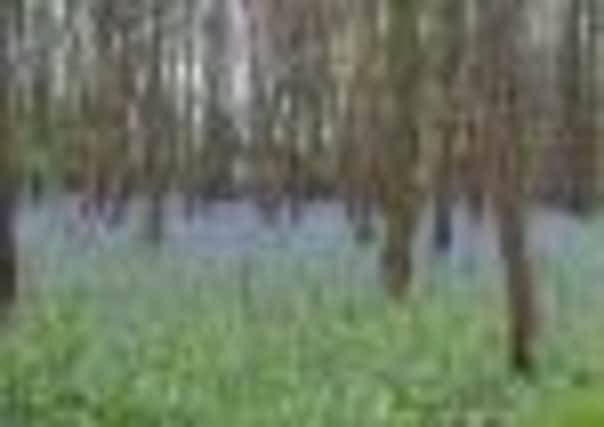Bluebells are in full bloom near Barton


Not only has the recent (much needed) rainfall made everything a lot greener, we stumbled upon a wood full of bluebells and were bombarded with the bright yellow of a field of oil seed rape.
We set off from the intriguing village of Hexton, parking up in a small lay-by at the start off the footpath in Hexton Lane. I say intriguing as, other than the high wall that surrounds Hexton Manor, you can’t really see much of the village from the main road, which takes you through a dark valley. Its pub is called The Raven, giving the place a bit of a gothic overtone, and it generally seems untouched by modern times.
Advertisement
Hide AdAdvertisement
Hide AdOnce you get into the village proper, though, there’s nothing to chill the blood. The Raven is a very nice pub that does a great Sunday lunch, and there’s also the Country Matters tea room at the village hall, and home furnishings treasure trove The Bothy, at Hexton Manor.
Setting off along the footpath away from the village, you start off with fields on either side, and soon glimpse a lovely valley off to the right (the land is private though so admire from a distance only!)
The path then takes you up a steep hill. The gradient doesn’t look too bad but it’s deceptive - I had to creep up on tiptoes. You’re then in an area of woodland, with another valley down to your left.
Like the other beauty spots in this area - Sharpenhoe Clappers, Pegsdon Hills and Sundon Hills - the stunning undulating landscape makes it feel you’re right at the tips of the fingers of the Chiltern Hills.
Advertisement
Hide AdAdvertisement
Hide AdThere’s a large area of woodland off to the right, which on my map isn’t marked as having any public footpaths, but there was an entrance into the wood and plenty of well-used tracks inside. There were also a lot of shotgun casings, so we didn’t venture too far in, which is a shame as we didn’t get as far as Ravensburgh Castle hillfort. Looking on the internet there’s a bit of debate about visiting the fort – it’s private land but apparently you can get permission from Hexton Manor (although some people on the forum clearly hadn’t).
You can see archaelogical finds from excavations that took place here in the 1960s at Stockwood Discovery Centre in Luton.
Back on the footpath you continue on to Lilley Road, taking a right and continuing along the road until you reach the footpath at the side of Barton Hill Farm.
This takes you up a gradual slope until you reach Stonley Wood off to the left, where the bluebells are. We might have missed it if it wasn’t for chatting to an elderly gentleman out for his weekly walk, who told us that was where he was headed.
Advertisement
Hide AdAdvertisement
Hide AdTo the right was the field of oil seed rape, and we were treated to some wonderful displays of flight and song from skylarks, who seemed to be enjoying the day as much as we were.
Next up on the left is Barton Hills National Nature Reserve, a chalk grassland reserve typical of the northern Chilterns.
It’s grazed in autumn and winter by Dartmoor ponies, and is also home to the pasque flower and several other rare types of wild flower, including greater pignut and fleawort (I’m sure they’re prettier than their names suggest).
As with other chalk grassland areas, it will be buzzing with butterflies in the summer.
Advertisement
Hide AdAdvertisement
Hide AdWe followed the footpath back down to the main road to Hexton - not exactly a pleasant stint as it’s a busy, fast road, but it’s your only choice really for getting back to base. Still, the sights along the rest of the walk more than made up for it.